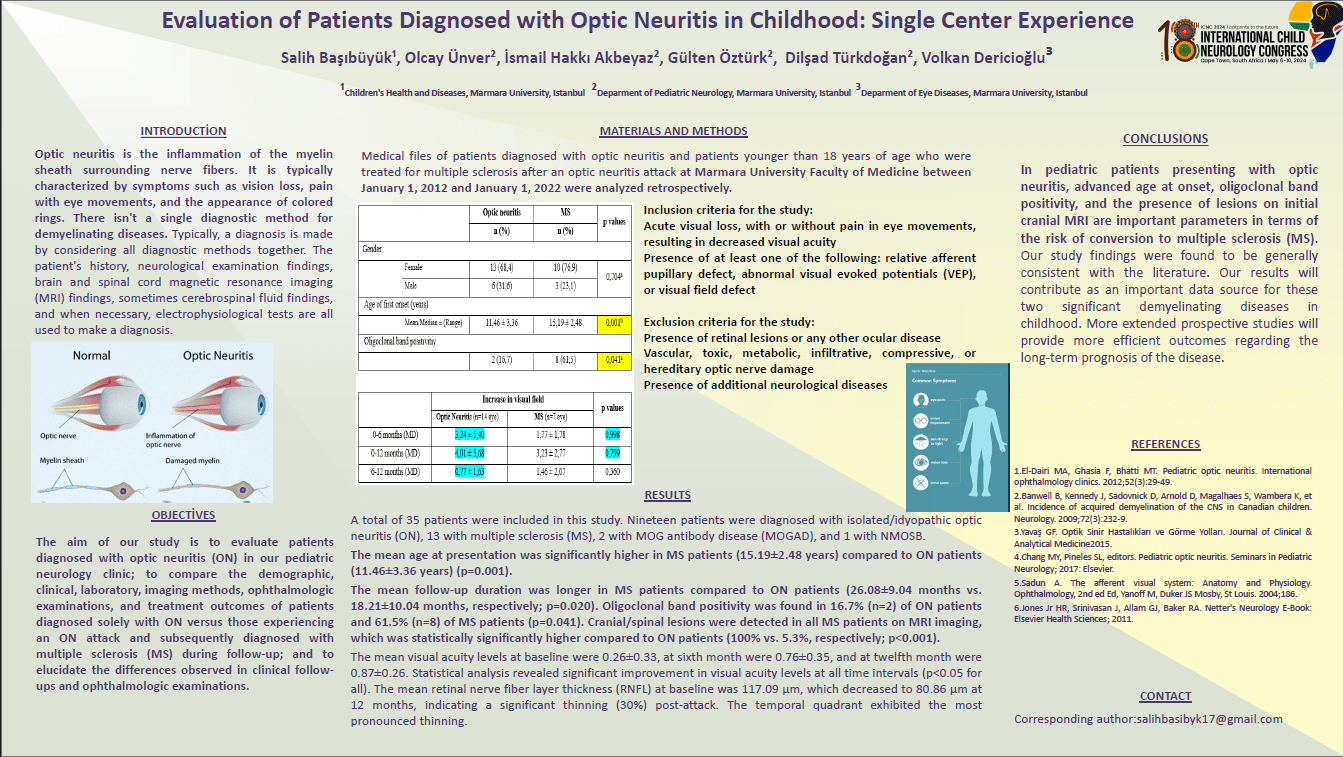Evaluation Of Patients Diagnosed With Optic Neuritis In Childhood: Single Center Experience
Background: The aim of this study is to describe and compare the clinical features, eye findings and imaging results of pediatric patients diagnosed with optic neuritis (ON) and multiple sclerosis (MS). Materials and methods: The medical files of patients diagnosed with ON and patients under the age of 18 who were diagnosed with MS after an ON attack and treated at Marmara University Faculty of Medicine between January 1, 2012 and January 1, 2022 were retrospectively examined. Results: 35 patients were included in the study. 19 of the patients were diagnosed with isolated/idiopathic ON, 13 with MS, 2 with MOGAD, and 1 with NMOSD. The average age at presentation was found to be higher in MS patients compared to ON patients (p=0.001). Oligoclonal band elevation was 16.7% in ON patients; It was found to be 61.5% in MS patients (p = 0.041). Cranial lesions were detected on MRI in all MS patients, and this rate was higher than in ON patients (p<0.001). In the evaluation of all patients, visual acuity levels were found to be 0.26±0.33 at the beginning, 0.76±0.35 at the 6th month, and 0.87±0.26 at the 12th month. According to the analyses, a statistically significant improvement was found in visual acuity levels at all time intervals (p<0.05 for all). Conclusion: In patients presenting with optic neuritis, older age at presentation, oligoclonal band positivity, and initial lesions on cranial MRI are important parameters in terms of the risk of conversion to MS.
Salih Başıbüyük
marmara university
Turkey
olcay ünver
marmara university
Turkey
volkan dericioğlu
marmara university
Turkey
ismail hakkı akbeyaz
marmara university
Turkey
eda almus
marmara university
Turkey
özge yapıcı
marmara university
Turkey
alican sarısaltık
marmara university
Turkey
gülten öztürk thomas
marmara university
Turkey

olcay ünver
marmara university
Turkey